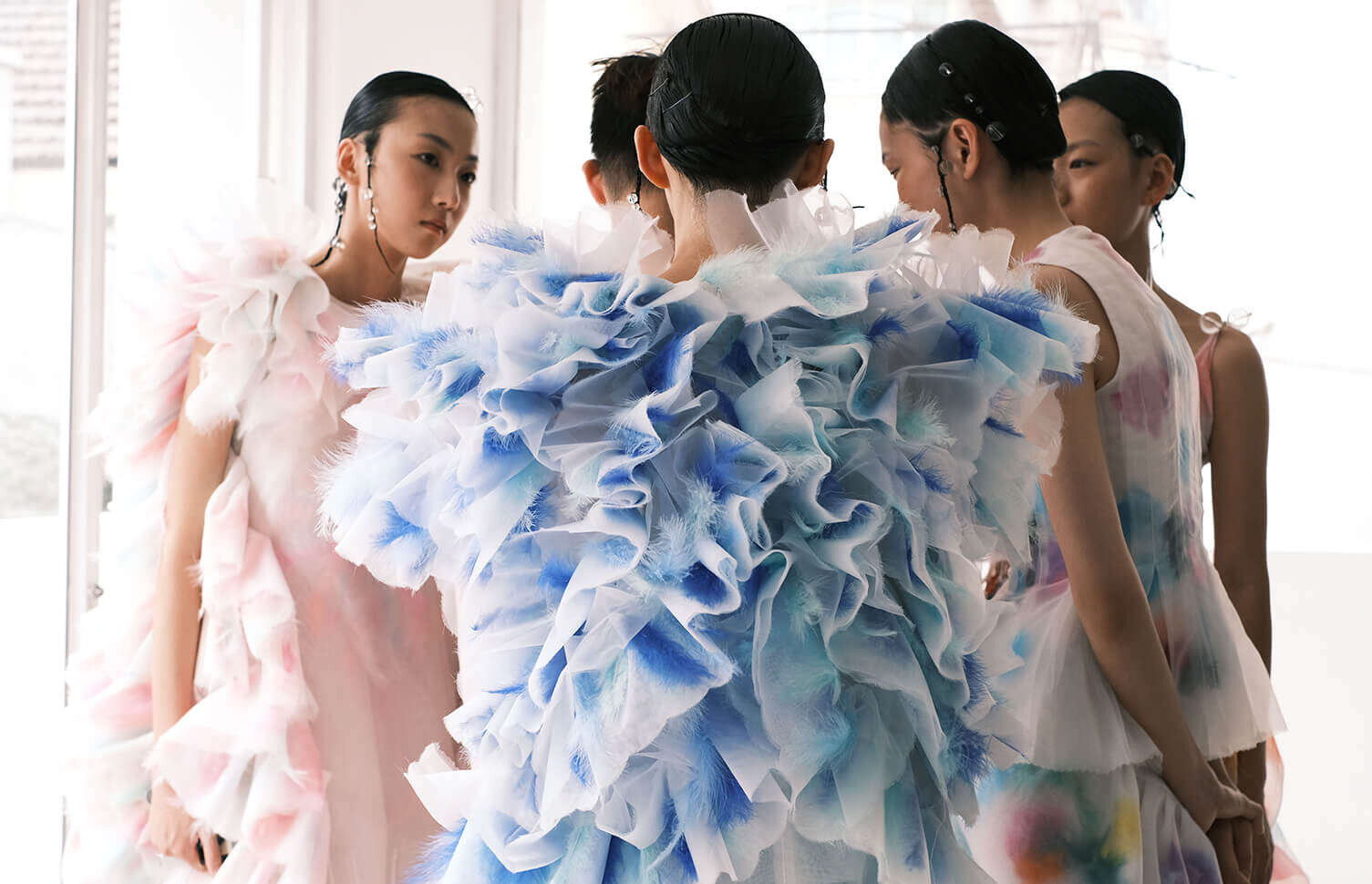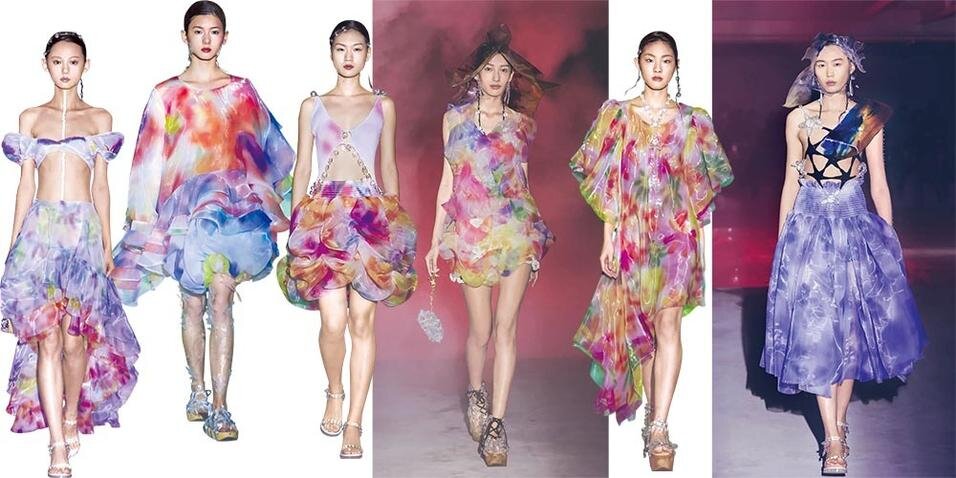Botanical Dyes and Prints
Susan Fang SS21 Selfidges
Eco printing and natural dyes are rapidly becoming a key part of sustainable fashion development. Their vibrant pigments are not only biodegradable but non-toxic and non-allergic being better and safer for human consumption and the environment.
What is botanical dyeing and printing?
Eco dyeing and printing consist of direct contact printing methods, drawing out pigments from plants to make interesting and often surprising marks on fabrics, especially cotton, linen, silk or wool. Plants typically used in botanical dying includes Aronia berries giving a blue/purple pigment, Alder leaves producing orange/brown prints, wild indigo giving fluorescent yellow prints, bloodroot showing intense orange/red colours and many more.
Botanical dyeing aims to use traditional dye plants in both old and new ways. Whilst this method of dying has been used for thousands of years, insofar as tracing back to the Ancient Egyptians Phoenicians, Peruvians and China where the growing interest in science and better organisation resulted in the emergence of herbalism, modern designers have re-invented the technique into high-end products in the form of wearable art.
Why replace chemical dyes with botanical dyes?
Textile dyeing, using toxic dyes, is the second-largest polluter of water globally, so there is a clear imperative to shift to natural dyes and less harmful processes. Botanical dyes print onto the surface of the fabric as a replacement for chemical or synthetic dyes. Chemical and synthetic dyes, including mercury, lead, chromium, copper, sodium chloride, toluene and benzene, tend to be preferred by fashion industries due to their ease of use, cheapness and variability. Synthetic dyes also stay more vibrant for longer whilst colours derived from natural resources will fade on clothing over time as, just like organic food and plants, there are no preservatives sealing the colour in. Nevertheless, to become more eco-friendly, many designers have replaced toxic dyes with plant- or flower-based alternatives, such as saffron blossom, which contains a colouring pigment that dyes fabrics naturally. Botanical dyeing has therefore become key in the development of sustainable fashion as it reduces waste and limits the unnecessary damage and pollution caused to the environment.
There are many reasons why designers and industries have paid more attention to natural dyes:
- Creates conscious and sustainable clothing
- Creates one-of-a-kind items in terms of shades and colour intensity
- Its health and safety for workers and wearers
- Can be used to give a second life to old items of clothing by revamping it
- Reduces the amount of waste when combined with organic fabrics
- Recycles food waste and compost
- Eliminates the risk of contaminating water and soil with chemicals
- Provides higher UV absorption in the fabrics they are used on and so more fully protect the wearer’s skin from the sun’s harmful rays
How does botanical dyeing and printing work?
There are several techniques for botanical printing. One of which begins with selecting the flowers and tearing off their petals, arranging them on the fabric of choice. Once the flowers have been arranged, a thin layer of recycled plastic is placed on top of the flowers. Then, the fabric is rolled up and secured tightly with string, in a tie-dye style format, and steamed. The result often shows the colours of the flowers bleeding into the fabric, giving it its natural dye. This technique, just like tie-dying, can be re-created and experimented within one’s own home.
Which designers are using botanical dyeing?
The 2015 Central Saint Martins’ graduate and designer- Susan Fang- explores new dye and print techniques using the eco flower dying technique. Fang uses flowers as stencils when dyeing her fabrics, leaving a subtle trace behind and embracing what naturally occurring materials can produce. Fang also utilises leftover materials from previous collections to create her free-flowing, ‘air-weaved’ garments. In an interview with WWD, Fang has stated she ‘invents [her] own fabrics and textiles…thinking about how [she] can do it to have no waste’.
As botanical dyeing with flowers has no fixed outcome, the results always differ making each print, and therefore each garment, unique. This is what makes Susan Fang’s designs are special and inimitable forms of art that simultaneously help the environment.



